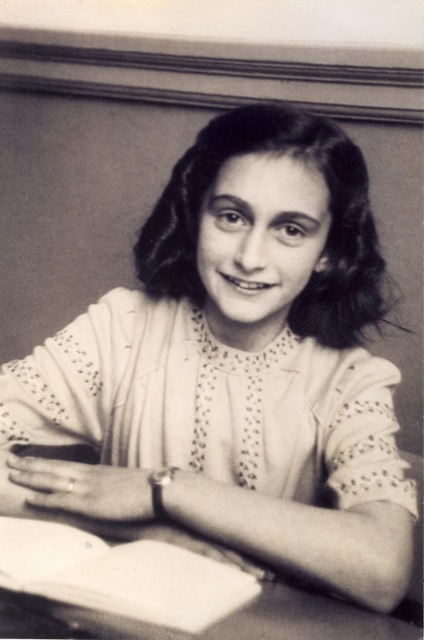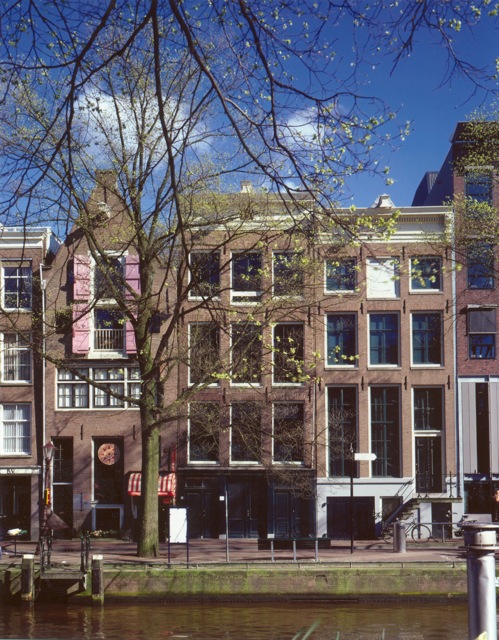
All photos appear courtesy of and copyright Anne Frank House/Anne Frank Fonds.
A walk through modern Amsterdam is a charming way to spend a morning or afternoon. The city’s famous canals and pedestrian-friendly streets can create a feeling of perpetual peace. But we must not forget that Amsterdam has seen its darker days as well.
Today I visited the Anne Frank House, which is one of the city’s most important historic structures. The world knows Anne Frank, a young Jewish girl originally from Germany, from the famous diary she wrote during her family’s hiding from the Nazis in the early 1940s.
Because there was no bombing in Central Amsterdam during World War II, it is easy to forget that this city ever saw the scourge of war. Anne Frank’s father Otto moved his family here from Germany in 1940 to flee Adolph Hitler’s Nazi regime in their native Germany. But by 1942, the Nazis had taken over the Netherlands in a five-day blitz, and began to round up Jews in Amsterdam and send them off to concentration camps.
Four employees of Otto Frank helped the Frank family and four other Jews to hide in a secret apartment behind the warehouse and offices where Otto worked. They managed to stay sequestered for more nearly two years, and Anne, a 15-year-old girl, kept detailed, moving diaries about the family’s time in hiding. Unfortunately, the “Secret Annex” was eventually found, and the Franks sent off to Auschwitz. Anne and her sister Margot were later sent to camp Bergen-Belsen, and died there of illness, one month before the camp was liberated by the Allies. Of the eight people who had been hidden in the ‘Secret Annex,’ only Otto Frank survived.
After his return to Amsterdam, Otto received Anne’s diaries from Miep Gies, one of the helpers and had them published. The work presents a moving portrait of the struggle and fear that the family faced, and helps readers to understand the grim realities of the times. Later, Otto established a museum at the former company, where today visitors can walk through the hiding place and learn about Anne’s life there.
The Diaries of Anne Frank became an worldwide bestseller, and the Amsterdam museum is equally popular. When I toured the house this morning, it was packed with visitors. We saw the small rooms where the families were forced to spend their days behind blackout curtains, without ever peering out into the streets below. In video exhibits throughout the museum, friends and contemporaries of the Frank family tell their stories about Otto, Anna, and surviving the Nazi regime.
Whenever you visit a place like the Anne Frank House, or another site associated with sweeping human atrocity, it can be difficult to process – sometimes, it’s simply too much to take. Your emotions begin to shut down, as a defense mechanism. But the images you see will remain with you, and in the coming days and weeks, they will come out of your subconscious in new thoughts and feelings.
I’m a firm believer that when we travel, we must take time to visit these difficult places. These visits are not fun, but they are important. These experiences sow the seeds of compassion, understanding and, oddly enough, hope – the hope that one day, we may reap a harvest of peace.












